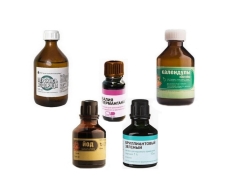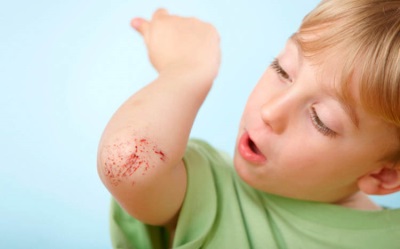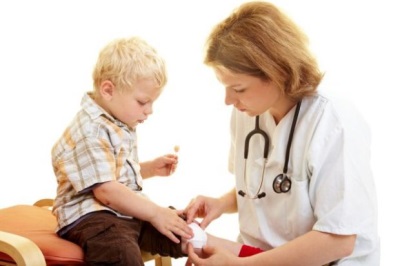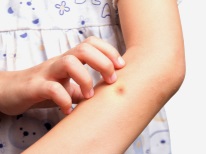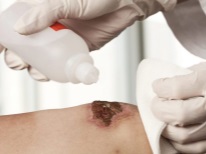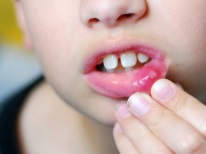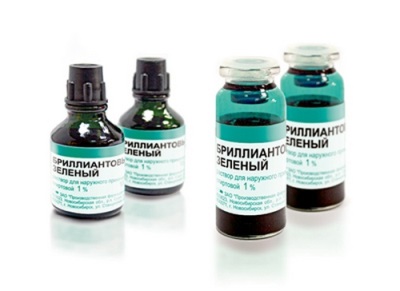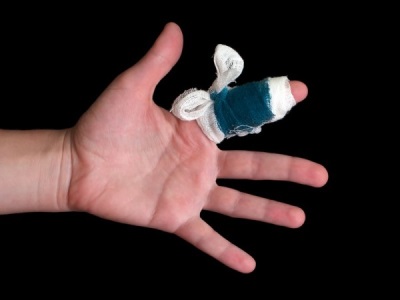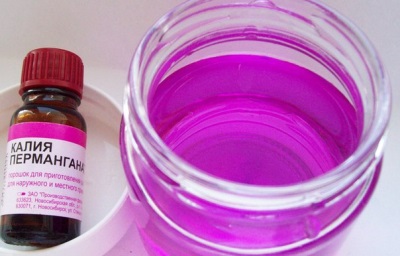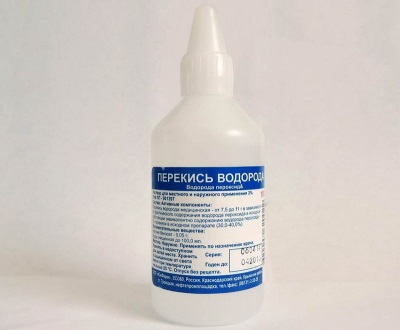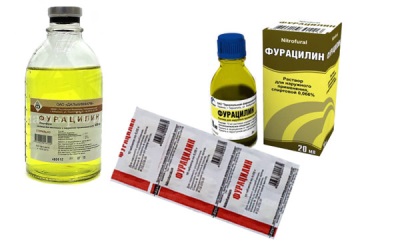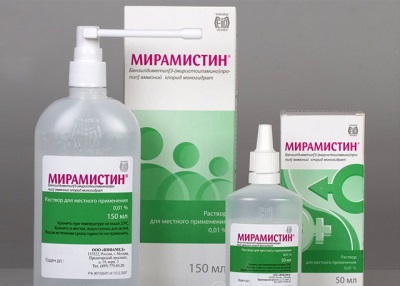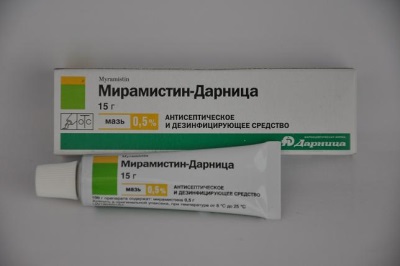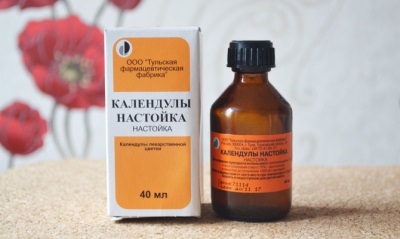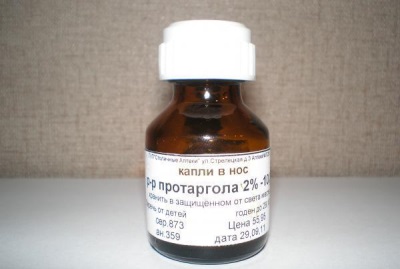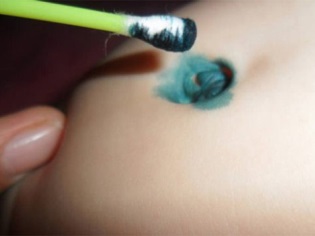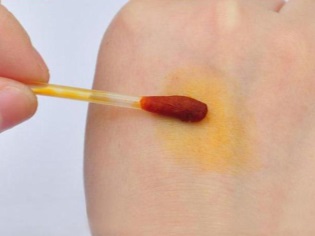Antiseptics for children
A person is surrounded by thousands of microbes. They are outside and inside. Not all of them are benevolently disposed, and the task of protecting a child from pathogens rises to parents and doctors from the very first minutes of the appearance of the crumbs into the world.
First, we treat the baby with an umbilical wound, then, when the little tot grows up, we begin to think about how to handle the numerous abrasions, scratches, insect bites, and burns. The kid in the knowledge of the surrounding world wants to look, climb and get a lot, and this, as we know, is quite traumatic.
In the kindergarten and school of the child, other dangerous bacteria that cause intestinal infections lurk, conjunctivitis. And here protection should be even more reliable. To protect the child will help modern antiseptics. Moreover, we make a reservation right away that a huge pharmacy range of antiseptic preparations that are suitable for adults is not fully applicable for the treatment of children. For example, Vishnevsky’s popularly favorite ointment cannot be attached and applied to the baby categorically.
What are antiseptics?
Antiseptics are anti-rotten, anti-microbial agents designed to destroy bacteria and microbes on exposed surfaces. They are herbicidal - capable of completely destroying microbes, and bacteriostatic - inhibiting the growth and reproduction of pest microorganisms.
The action of antiseptics is based on the destruction of an environment favorable for the development of bacteria and microbes. If the microorganism does not receive enough nutrition and moisture, it quickly dies. In addition to aggressive effects on bacteria, modern antiseptics also have associated properties - cauterizing, regenerating (regenerative), anti-inflammatory, desiccant.
The scope of children's antiseptics is quite wide - from traumatology, ophthalmology to surgery and dentistry. Children need antiseptics in a wide variety of cases:
- Burns;
- Abrasions, scratches, wounds, including postoperative;
- Boils and pustules;
- Fungal diseases of the skin;
- Insect bites;
- Stomatitis (inflammation of the oral mucosa);
- Blepharitis (inflammation of the eyelid edge of the eye);
- Conjunctivitis;
- Diseases of the throat and nose, runny nose.
What can babies?
Antiseptics that are allowed to take children must meet a number of requirements:
- Safety and non-toxicity
- Inability to be absorbed into the baby’s blood through the pores of the skin,
- Hypoallergenic.
Children should not use a solution of boric and salicylic acids, formalin, and Vishnevsky ointment.
The most famous and popular "children's" (safe) antiseptics, which are required to be present in the home first aid kit:
Iodine (solution)
It is an antiseptic with antimicrobial, local irritant and cauterizing effects. It happens more or less concentrated for kids, only 5% solution is possible. More "strong" saturated solutions can cause skin burns.
The iodine solution has a strong anti-inflammatory effect, he instantly destroys all microorganisms in his field of action. And its ability to cauterize and dry makes the drug indispensable in surgery, treatment of pustular formations on the skin. This is a strong antiseptic, so it is recommended to use it in small quantities, avoiding contact with the solution on the wound, process only its edges.
Iodine solution is also used for bruises - all parents know that the mesh, drawn with a cotton swab dipped in iodine, promotes the rapid resorption of hematomas and seals.
Zelenka (brilliant green solution)
Local antiseptic, familiar to all from childhood. It has a pronounced antimicrobial effect, does not cauterize, but dries wounds. In dry form, these are bright green crystals.
For medical purposes, use an aqueous solution and a solution based on alcohol. Water in finished form is not for sale, but it can be prepared in a pharmacy if necessary. But the alcohol solution is our usual "Zelenka". Despite the fact that the homeland of the antiseptic is Germany, nowhere but in Russia and the former allied states, it is no longer used. This is due to the carcinogenicity of the drug, unproven and not yet refuted, as well as unaesthetic consequences of its use - there are long-disappearing green spots.
In pediatrics brilliant green is widely used for disinfecting and drying the umbilical wound after the child is discharged from the hospital. Later, small wounds and abrasions are smeared with green paint, as well as bumps on the skin that appear with chickenpox. Do not allow hits green stuff on the mucous membranes. For cauterization of stomatitis, only an aqueous solution of brilliant green, and not alcohol is suitable.
Potassium permanganate (potassium permanganate)
Dark crystals of the salt of manganese acid are dissolved in water. 1% solution is used for delicate purposes - gargling, treating wounds, burns pustules and ulcers on the skin with a more concentrated composition. A weak solution of potassium permanganate bathe newborns and wash their eyes if poisonous insects are caught in them.
Potassium permanganate dries and prevents inflammation. Should be kept as far as possible from children, because only 3 grams of potassium permanganate in crystalline form is a lethal dose. Recently potassium permanganate is released from pharmacies strictly by prescription.
Hydrogen peroxide
An antiseptic that can and should be used literally from the first days of a baby’s life. For children use 3% solution. Hydrogen peroxide kills bacteria with atomic oxygen. It is he who stands out when peroxide gets into the wound. However, it is not a question of great sterility, therefore, they try to use peroxide only to clean the wound from contamination, pus, and soak crusts and dried dressings painlessly. Peroxide can rinse your mouth with stomatitis or after tooth treatment in order to avoid infection.
Furacilin
Local antiseptic rich yellow and bitter to the taste. Available in the form of a solution, ointment, paste and tablets for solution preparation. They are treated with burns, washing the nasal cavity for sinus and other diseases of the respiratory system, gargling with furatsilinom help with angina.
Antiseptic is also used for washing eyes with conjunctivitis, blepharitis. In addition, furatsilin - an indispensable antiseptic with diseases of the urinary tract and intestinal infections.
Miramistin
This modern antiseptic has an incredibly broad spectrum of action. The colorless, odorless composition is available in the form of a solution and ointment. It has antimicrobial action with a visible healing effect. Non-toxic, and therefore perfectly suited even for children up to a year. They are treated with wounds, burns, abrasions, cuts. Suitable for combating inflammation in the mouth.
Doctors prescribe this antiseptic to irrigate the sore throat, and this use is suitable even for the youngest patients. Ointment Miramistin applied only outwardly - for the treatment of wounds and pustules. Miramistin is also used for treating hands before medical procedures.
Tincture of calendula
It is an antiseptic with a pronounced antimicrobial and cauterizing effect. Calendula tincture, or rather its alcohol solution is used for inflamed cuts, festering wounds. If the gums are inflamed with this antiseptic with the addition of boiled water, it is recommended rinse the mouth.
Protargol
Antiseptic nasal drops Protargol - an effective remedy for the disinfection of the sinuses in the common cold of various origins. The main active ingredient is silver proteinate. The instructions for use say that for children under 5 years old the drug is contraindicated. But many pediatricians, according to the established practice, prescribe this medicine and younger children. Drops can be used as an eye, but only as prescribed by a doctor.
General requirements for the use of antiseptics in children
- For the treatment of the child’s nose, throat, mouth or eyes, only water antiseptic solutions are suitable. Solutions based on alcohol or oil - for these purposes can not be used.
- Prevent antiseptic from entering into an open deep wound. Process only its edges. Getting inside is "excusable" only peroxide.
- Before applying to the burns and abrasions of the ointment, gel with antiseptic effect, be sure to treat the sore spot with hydrogen peroxide.
- Before you treat antiseptic pustules or fungal skin diseases, make sure that the place where the funds will be applied was as dry as possible.
- After the child has treated the throat with an antiseptic, you need to abstain from eating and drinking for an hour.
- After treating the eyes with antiseptic drops or ointments, make sure that the child does not rub the eyes for at least half an hour to avoid the spread of infection.
- Remember that antiseptics - this is also a medicine, do not allow an overdose. More in this case does not mean - more useful.
- Keep track of the shelf life of drugs in your first-aid kit. For antiseptics, this is doubly important - after the expiration of a period specified by the manufacturer, many of them practically lose their basic properties. Also improper storage will adversely affect antiseptics - high or low temperatures, direct sunlight destroys the composition, depriving it of its important antimicrobial properties.
In the next video, the popular pediatric physician Komarovsky tells in detail about the antiseptics, what they are and when they should be used. Be healthy!
